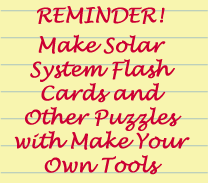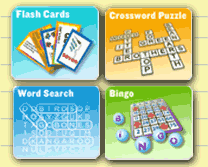NSTA Standards
Students should have practice in observation of weather phenomena and possess a weather vocabulary.
Key Concepts
We wear special clothing for different kinds of weather. Knowing what the weather will be can help us choose what to wear.
Teaching Ideas and Tips
Print copies of the following Printables pages:
Hats Off! Cold Weather Activities
This Printable is three pages of great "hat" activities and poems. Use these to introduce or enhance your weather unit.
Weather Clip Art
Use this simple clip art on your bulletin board or smart board to elicit discussions about the different kinds of weather your students may have experienced and the clothing that is appropriate for different kinds of weather.
Weather Relay
This Printable contains directions for a great clothing relay race. You will need to do some collecting (ask your room moms to help!) and a little preparation for this activity, but it is great fun and well worth it.
Students will be competing in a relay race in which they will have to wear different types of clothing that is particularly appropriate for different kinds of weather. After the race is over, have each child describe when, (time of year) and for what kind of weather he or she might wear this clothing.
Classroom Management
Students that have never experienced cold weather may have difficulty with this project. If they live in the Southwest desert or in Florida, they may not understand really cold weather and may not be familiar with words like stocking cap, snowmobile suit, ski jacket and ski mask. On the other hand, students in the cold areas may not understand that in Florida and the southwest, families often eat Christmas dinner on the patio and still have the air conditioning on in January.
Make sure that all of the clothing for the weather relay and the hat activities are clean. If you are concerned about the possibility of students getting lice, pass out hair nets (available from the school cafeteria), shower caps, or simply have the students hold the hats instead of wearing them – not as much fun, but it could save you some grief later on!
Be sure to do the weather relay race several times. Students will be wearing different clothing each time, and they will find this great fun. You can assess their knowledge simply by listening to their explanations of when and where they might wear the particular type of clothing.
Make this activity even more valuable by encouraging students to broaden their descriptions of the weather. What kind of activity would be done wearing this type of clothing? Instead of allowing them to say that they would wear the stocking cap in cold weather, encourage them to say they would wear it to make a snowman or to go sledding.
Vocabulary
Raincoat – A raincoat has a special coating that will keep the wearer dry in the rain.
Umbrella – An umbrella is a round, waterproof, hand-held shield from wet weather. Umbrellas often fold up into small cylinders.
Snowsuit – A snowsuit is a combination of special clothing intended to keep the wearer warm in cold weather. Often a snowsuit is a one-piece jump suit with a zipper front.
Mittens – Mittens are special gloves with a place for the thumb, and a separate covering for the other four fingers.
Gloves – Gloves are hand coverings with separate spaces for all five fingers.
Hat – A hat is any covering for the head. We wear special hats for particular kinds of weather: rain hat, toboggan hat, sun hat, stocking cap.
Scarf – A scarf is a piece of cloth that is worn on the head or around the neck for warmth or decoration.
Use this Weather Vocabulary list as a start—add more of your own—and use Make Your Own tools to create your own flash cards!
Printables Resources
Outdoor Play (Skill: Lesson plans for weather studies using television as a resource)
Day and Night (Skill: Recognizing that some activities are for day; some are for night)
All Dressed Up (Skill: Matching shirts, pants and shoes for different weather)
Maze - Raindrop to Umbrella (Skill: Finding the way through a maze. Fine motor skills.)
Matching Shadows (Skill: Matching figures to the shadow they cast)
Rainy Day (Skill: Handwriting practice – Tracing vertical lines)
Sun (Skill: Fine motor skills. Trace and decorate a sun)
Umbrella (Skill: Fine motor skills. Trace and decorate an umbrella)
Snowman (Skill: Fine motor skills. Trace and decorate a snowman)
Scissor Skills (Skill: Fine motor skills. Cutting scallops and curves)
Raindrops (Skill: Fine motor skills. Matching sizes. Cut and paste raindrops)
What Is Next? (Skill: Sequencing)
Assessment
Make copies of How’s the Weather? for each child.
As homework, students will match the weather word and illustration to the correct clothing for that situation. This will be particularly effective if you have done the weather relay races.
You may also want to use How Is The Weather?
which is the same as the Printable listed above, but it is the color version, great for the smart board.
Print out copies of Bundle Up
This page asks students to list in order, the clothing they might need to put on in cold weather.
The list of clothing words related to weather is quite long. Make a word wall of these with illustrations or photographs cut from magazines. See how long you can make the list and encourage students to bring in submissions that can be added to the bulletin board. Consider stapling an example of each type of weather clothing beside the word for that item. (Display a mitten beside the word mitten.) Coupled with the hands-on relay, this can be a wonderful activity for students that are learning English.
Send Home Letter
Make copies of Printables stationery. Use this for your send home letter.
Dear Families,
Our class has been learning about the different kinds of clothing that is best for different kinds of weather. One thing that we learned is that different families from different parts of the country have different names for the same article of clothing. Help your child understand that a "stocking cap" is the same as a "toboggan cap" and that "galoshes" are the same thing as "rain boots." This can be a lot of fun for you and your family and it will help your child broaden his understand of the English language. Be on the lookout for these differences when you are reading stories of watching television with your child.
As you are getting ready for school or weekend activities, allow your child to be part of the clothing selection process. Be sure to name each article of clothing that is not everyday wear, and talk about why they may or may not need to include that for the day’s outing. For example, "We will take our rain ponchos today because it is cloudy." 'We won’t need mittens or a scarf because it is sunny and warm."
If you rotate the clothing articles in the spring and fall, let your child be a part of changing out clothes that are appropriate for the upcoming summer or winter seasons. Be sure to provide names for every type of clothing you are moving.
Remember that every time you engage your child in these conversations, you are developing reading and language skills that will be vital for success in school.
Your child’s teacher
___________
Try printing this send home letter on Weather Stationary
Homework
Print out one copy of Clothes Sort for each child in your class. Cut out the top two squares and have students glue one on each of two brown paper lunch bags. One bag will say "Summer" and one will say "Winter." For homework, students will cut apart the remaining squares and place them in the bag that indicates when that article of clothing would be worn. For example, the flip-flop shoes would go in the "Summer" bag.
Print out copies of Name It!
Parents will help students cut, glue, and match words with weather symbols.
More to Explore
Instant Internet Activities:
The Weather Channel
This page is part of The Weather Channel and has great links for teachers. You can bookmark this page to get the weather forecast for your zip code. When visit this site, have your students help you decide what kinds of clothing you would need for the weather predicted.
Go to this page for great craft ideas, definitions of meteorological terms and answers to great kid questions like, "Why do we have thunderstorms mostly in the summer?"
Follow-Up Activities:
Help your students understand that weather is different in different parts of the country. Ask the parents of your students to send in the zip codes of grandparents or other family members that may live far away. Then go http://www.theweatherchannelkids.com/ and type in the zip code for that area. You will quickly learn what kind of weather "grandmother" is having in Arizona! Talk about what kinds of activities you could be doing there and what kind of clothing they might be wearing in school on that day. (Kids in the south often wear shorts to school all year long. What do they wear in Alaska?) If you are lucky, you will get weather reports from all over the country.
Contact schools from different parts of the country and ask students in those classes what they are wearing to school and what kinds of clothing they might wear for outdoor activities. Discuss how the answers are the same and different from those given by the students in your own class.
Teaching Units are for subscribers only. Please login to access the site.
Not a subscriber? Subscribe Now for access to Scholastic Printables Teaching Units


